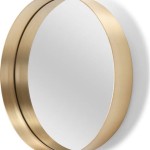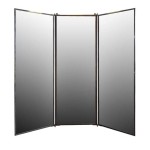How To Mirror iPad With Macbook Pro
Mirroring an iPad screen to a Macbook Pro offers several advantages, from presenting work to a larger audience to enjoying media on a bigger display. This article outlines various methods to achieve this, detailing the necessary steps and system requirements for each.
1. Using a Wired Connection with QuickTime Player
A wired connection provides a stable and lag-free mirroring experience, ideal for activities requiring precise timing, such as gaming or demonstrating interactive applications. This method requires a USB cable compatible with both the iPad and Macbook Pro, typically a USB-C to Lightning cable or USB-C to USB-C cable, depending on the iPad model.
First, connect the iPad to the Macbook Pro using the appropriate cable. Next, open QuickTime Player on the Macbook Pro. In the menu bar, select "File" and then "New Movie Recording." A recording window will appear. Click the dropdown arrow next to the record button. Under the "Camera" section, select the connected iPad. The iPad's screen will then be mirrored on the Macbook Pro display.
2. Mirroring Wirelessly with AirPlay
AirPlay facilitates wireless screen mirroring, offering greater flexibility. Both devices must be connected to the same Wi-Fi network for AirPlay to function. Certain older Macbook Pro and iPad models may not be compatible with AirPlay mirroring.
To begin, ensure both the iPad and Macbook Pro are on the same Wi-Fi network. On the iPad, access Control Center by swiping down from the top-right corner of the screen (or swiping up from the bottom of the screen on older iPads). Tap the "Screen Mirroring" icon. A list of available AirPlay devices will appear; select your Macbook Pro from the list. The iPad screen will then be mirrored to the Macbook Pro.
3. Utilizing Third-Party Screen Mirroring Applications
Several third-party applications offer additional screen mirroring functionalities, providing features such as enhanced recording capabilities or specialized tools for presentations. Researching and selecting a reputable application suitable for the intended purpose is recommended.
After installing the chosen application on both the iPad and Macbook Pro, launch the application on both devices. Follow the application's specific instructions for establishing a connection and initiating screen mirroring. The setup process typically involves pairing the devices through the application interface.
4. Troubleshooting Common Mirroring Issues
Occasionally, issues may arise during the mirroring process. Several troubleshooting steps can help resolve these problems. First, ensure both devices are running the latest software versions. Outdated software can sometimes cause compatibility issues.
If connecting via AirPlay, confirm both devices are on the same Wi-Fi network and that the network is functioning correctly. Restarting both devices can also often resolve connectivity problems. If using a wired connection, try a different cable to rule out cable malfunction. For third-party applications, consult the application's support documentation or contact the developer for assistance.
5. Optimizing Mirroring Performance
Several practices can optimize the mirroring performance. Closing unnecessary applications on both the iPad and Macbook Pro can free up system resources, resulting in smoother mirroring. Reducing the brightness of the iPad display can also improve performance, particularly for wireless mirroring.
For demanding tasks like gaming, a wired connection is generally recommended for minimal latency. When using AirPlay, ensure the Wi-Fi network is not congested with other devices to minimize interference. Choosing the appropriate mirroring method based on the specific task can significantly enhance the overall experience.
6. Understanding the Limitations of Screen Mirroring
While screen mirroring provides a convenient way to share content, certain limitations exist. The mirrored display on the Macbook Pro will reflect the aspect ratio of the iPad, potentially resulting in black bars on the sides if the aspect ratios do not match. Furthermore, the audio output will always come from the iPad, even if the display is mirrored on the Macbook Pro.
Some applications may also have restrictions on screen mirroring functionality. For instance, certain video streaming apps might prevent content from being displayed on a mirrored screen due to copyright restrictions. Understanding these limitations can help manage expectations and ensure a smoother user experience.
7. Choosing the Right Mirroring Method for Your Needs
The optimal mirroring method depends on the specific use case. For presentations or sharing static content, AirPlay offers the convenience of wireless connectivity. For activities requiring low latency and responsiveness, such as gaming or using interactive applications, a wired connection via QuickTime Player is recommended.
Third-party applications cater to more specialized needs, often providing features like enhanced recording capabilities or advanced presentation tools. Consider the specific requirements of the task at hand when selecting a mirroring method to ensure optimal performance and functionality.

How To Share Ipad Screen On Mac Wireless Method
Cara Menggunakan Ipad Sebagai Monitor Kedua Macbook Ipoint Bandung

Apple S Sidecar Turn An Ipad Into A Secondary Mac Display

How To Share Ipad Screen On Mac Via Usb Or Wifi

2024 Screen Mirroring Mac To Ipad Most Common Solutions

3 Ways To Share An Ipad Screen On A Mac 2024 Movavi
Cara Menggunakan Ipad Sebagai Monitor Kedua Macbook Ipoint Bandung

How To Extend Or Mirror A Mac Screen An Ipad With Sidecar Pcmag

Use Ipad As A Second Display Apple Support

Mirror Ipad And Iphone To Your Mac Display








